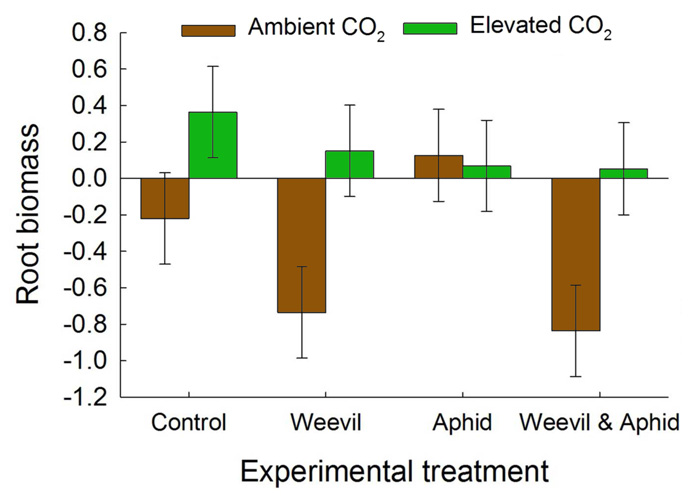| Follow @co2science |
Paper Reviewed
McKenzie, S.W., Johnson, S.N., Jones, T.H., Ostle, N.J., Hails, R.S. and Vanbergen, A.J. 2016. Root Herbivores Drive Changes to Plant Primary Chemistry, but Root Loss is Mitigated under Elevated Atmospheric CO2. Frontiers in Plant Science 7: 10.3389/fpls.
Writing as background for their work, McKenzie et al. (2016) say that "belowground herbivory represents a major challenge to crop productivity and sustainable agriculture." And to learn how atmospheric CO2 enrichment might possibly impact this unfortunate situation in the case of the raspberry host-plant (Rubus idaeus), they conducted a microcosm experiment using the large raspberry aphid (Amphorophora idaei) and the root-feeding larvae of the vine weevil (Otiorhynchus sulcatus).
This study was conducted in a controlled-environment where the six scientists maintained four different biological treatments (control, aphid only, weevil only and a combination of both of the herbivores), which they applied to two different raspberry cultivars (Glen Ample and Glen Clova) that they grew under two different atmospheric CO2 concentrations (390 ppm and 650 ppm). And what did they thereby learn?
First of all, and rather surprisingly, McKenzie et al. report that the elevated CO2 environment did not increase crop biomass, nor did it impact herbivore abundance. In addition, they say that root herbivory reduced belowground crop biomass under ambient CO2 but not under elevated CO2 (see Figure 1 below), which suggests, in their words, that "crops could tolerate attack in a CO2 enriched environment," but that they could not do so under the current ambient CO2 concentration. And so they go on to conclude, at least in the case of raspberry plants, that "biotic interactions appear as important as direct effects of elevated CO2 on crop productivity."

Figure 1. The combined effect of CO2 treatment and herbivore treatments on raspberry root biomass. Adapted from McKenzie et al. (2016).




